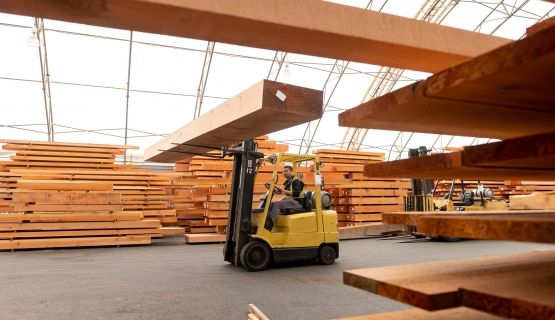Workers' compensation and benefits policy
Workers' compensation is a form of insurance providing wage replacement and medical benefits to workers injured in the course of their employment. Eligibility for, and awarding of, benefits to injured workers are determined by workers’ compensation boards, which are funded through employer premiums. IWH research explores trends in compensation benefits, including benefit adequacy and equity, as well as the effects of compensation policy design on injury and illness prevention.
Featured

Research Highlights
Severe pain, not pressure to return to work or lack of accommodation offer, linked to opioid use post-injury
An IWH study found that among a group of injured workers in Ontario, those who experienced severe pain were more likely to use opioids than those who had no or only mild pain.
Published: February 12, 2025

Impact case study
Following reports by IWH and others, B.C. amends the law to strengthen protections against claim suppression
After an IWH study filled a research gap on claim suppression in B.C. and helped make the case for change, the province amended legislation to strengthen protections against the practice.
Published: July 6, 2023

Research Highlights
Severe pain, not pressure to return to work or lack of accommodation offer, linked to opioid use post-injury
An IWH study found that among a group of injured workers in Ontario, those who experienced severe pain were more likely to use opioids than those who had no or only mild pain—regardless of whether they felt they had to return to work too soon, or were offered work accommodations.
Published: February 2025
Journal article
Journal article
Claim suppression of occupational injuries and illnesses among precariously employed immigrant workers in Ontario
Published: New Solutions, January 2025
Journal article
Journal article
The impact of regulatory workplace safety inspections on workers' compensation claim rates
Published: American Journal of Industrial Medicine, July 2024
Journal article
Journal article
An observational study of pain severity, cannabis use, and benefit expenditures in work disability
Published: Canadian Journal of Public Health, January 2024
Journal article
Journal article
Thirteen-year associations of occupational and leisure-time physical activity with cardiorespiratory fitness in CARDIA
Published: Medicine and Science in Sports and Exercise, November 2023
Journal article
Journal article
Understanding the early impacts of the COVID-19 pandemic on brain injury associations across Canada: a qualitative study
Published: Inquiry, November 2023

Research Highlights
Workers are using cannabis to treat work-related conditions, mostly without medical guidance
While cannabis is often used recreationally, there is growing interest in its use for therapeutic purposes, such as for pain, anxiety, depression and sleep problems. Some workers are using cannabis many months following the onset of a work-related condition, whether to treat their condition or for other reasons, mostly without medical guidance.
Published: October 2023
Journal article
Journal article
Transition between social protection systems for workers with long term health problems: a controlled retrospective cohort study
Published: SSM - Population Health, August 2023

Impact case study
Following reports by IWH and others, B.C. amends the law to strengthen protections against claim suppression
After an IWH study filled a research gap on claim suppression in B.C. and helped make the case for change, the province amended legislation to strengthen protections against the practice.
Published: July 2023
Journal article
Journal article
Cannabis use among workers with work-related injuries and illnesses: results from a cross-sectional study of workers' compensation claimants in Ontario, Canada
Published: BMJ Open, July 2023